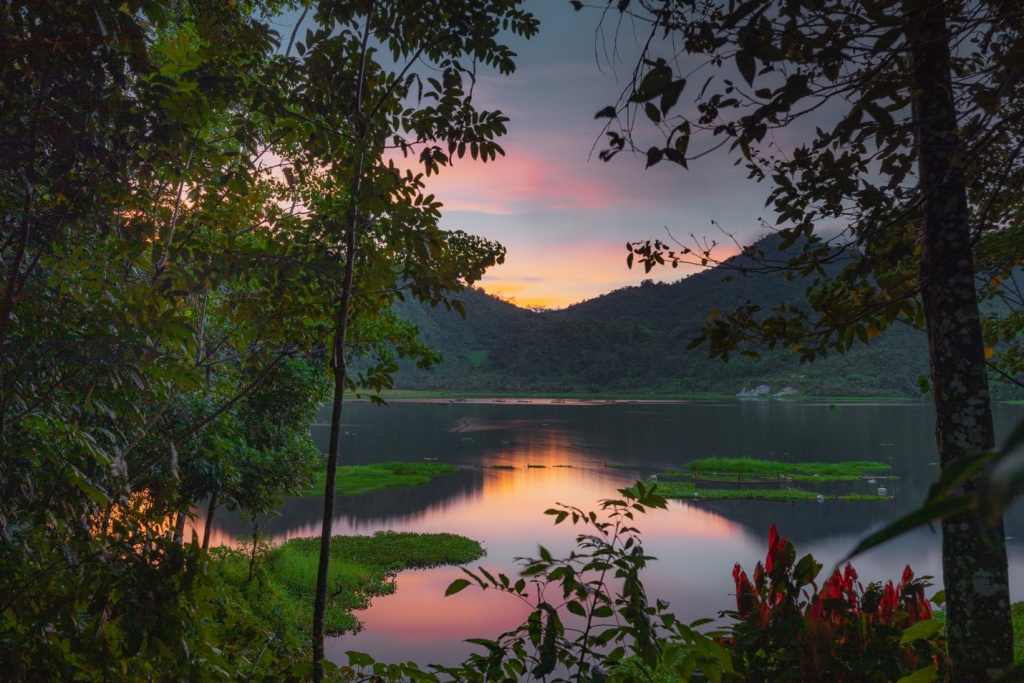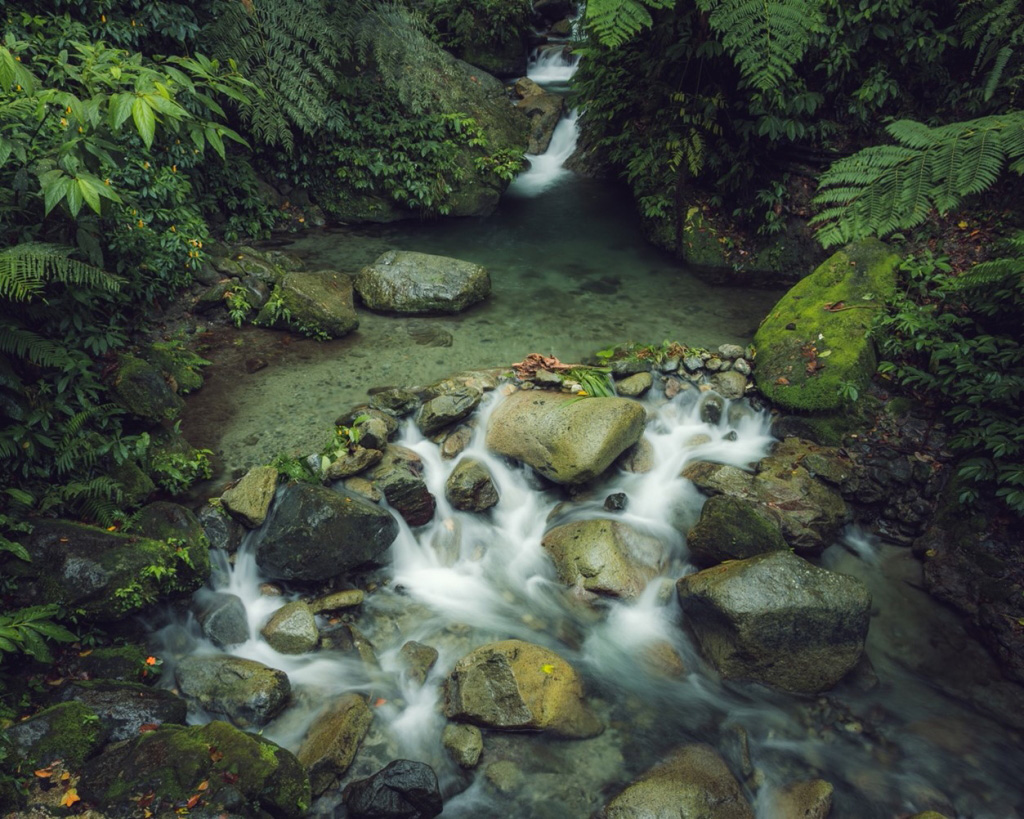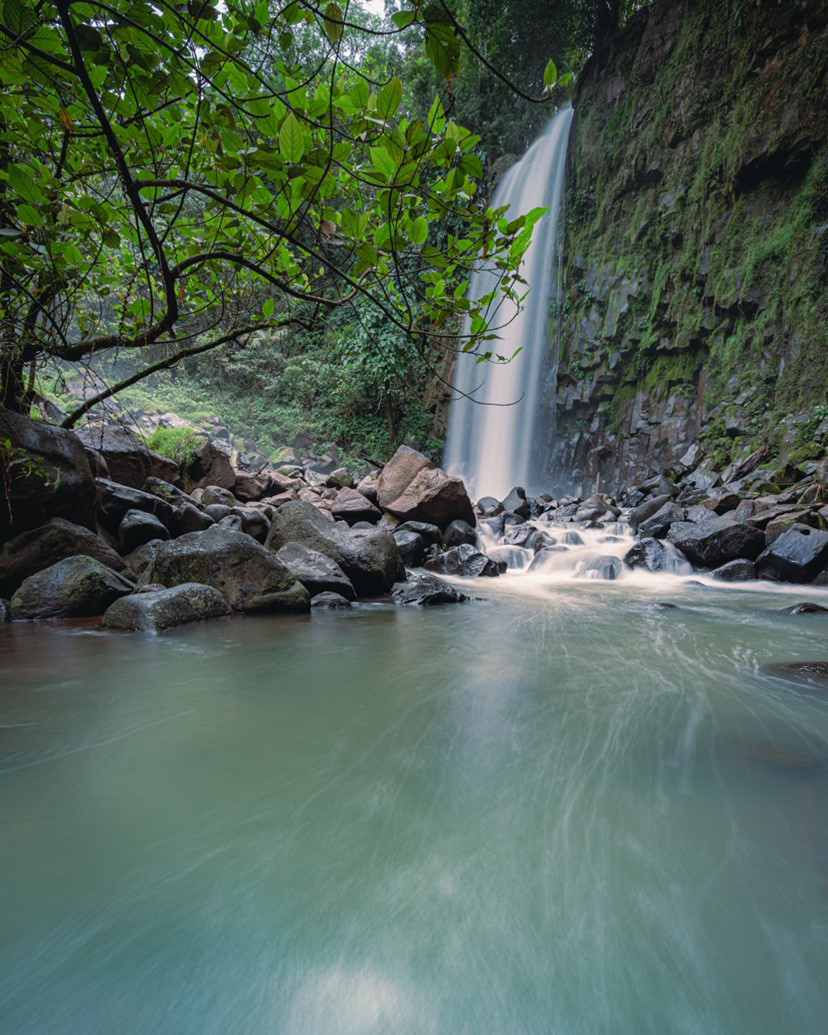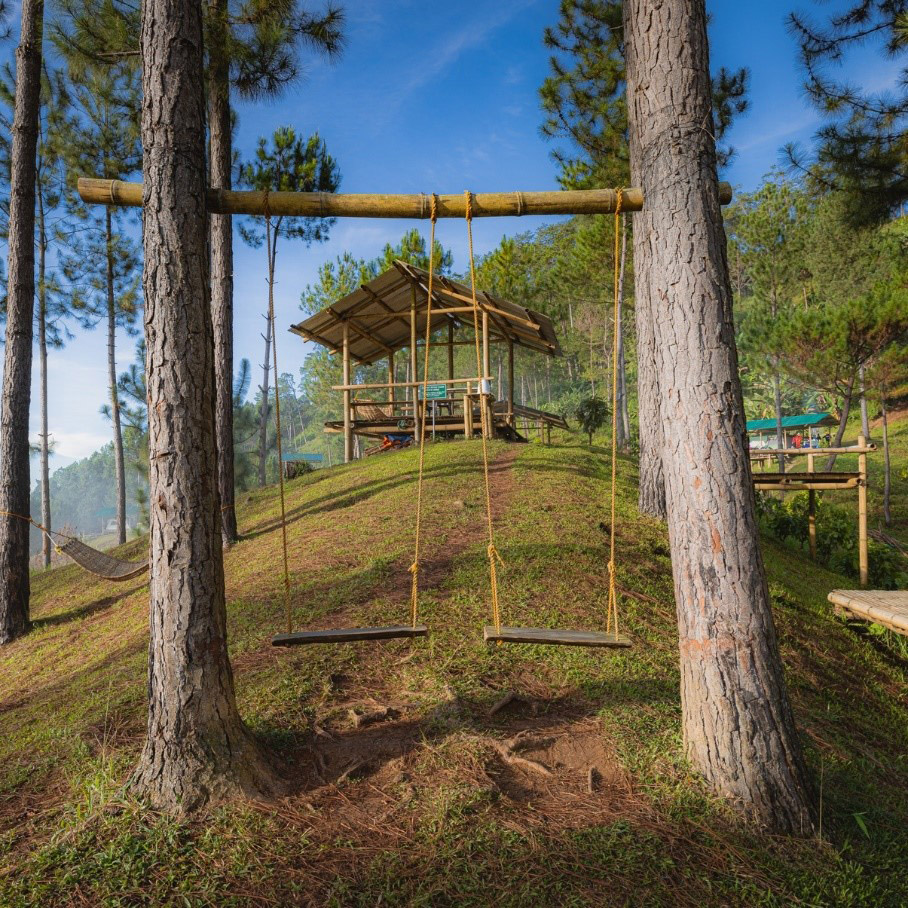Often overlooked because of its political history, the southern island of Mindanao in the Philippines is full of places with stunning scenery that let you get closer to nature. We learn about a few less-known local favourites from Rod Fernandez, a Mindanao native. (Images and tips by: Rod Fernandez)
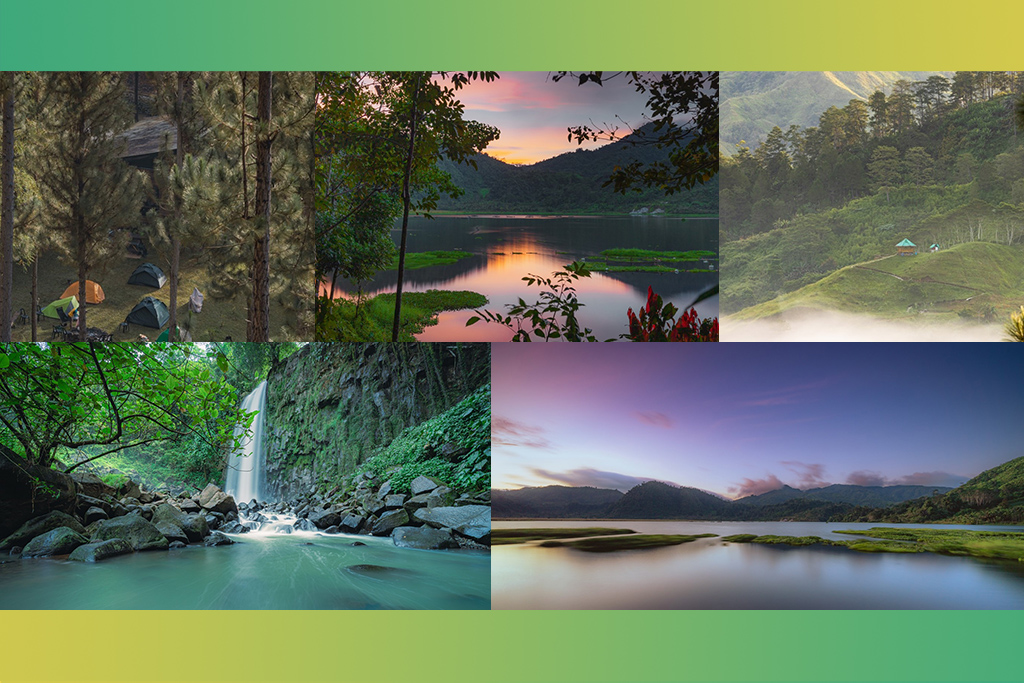
Mindanao: Filled with vast natural beauty
Due to past issues with rebels and terrorism, Mindanao has a reputation as a dangerous place. As a result, its many beautiful natural landscapes have been overlooked by foreign and domestic tourists.
I have made it my personal mission to explore different places on the island and show the world its vast natural beauty. The political and security situation has significantly improved over the years, and it is now mostly safe to explore different parts of the region.
Here are a few of my favourite places, along with some shooting tips.
1. Lake Leonard, Davao de Oro
EOS R + RF15-35mm f/2.8L IS USM @ 35mm, f/8, 141 sec, ISO 100
Other equipment: CPL, 5-stop ND filter
A colourful sunrise after a storm
This was shot on my first visit to the 200-hectare freshwater lake, which is actually the caldera of Mt. Leonard, an active volcano. A storm had just passed, and this image was shot when the sky briefly cleared, allowing the morning sun to pass through.
For this shot, I decided to wait for the right light and take a very long exposure so that I could at least have a very colourful sunrise photo with Mt. Leonard, the lake, and the sunrise sky in one image. The lake waters are very still: ideal for reflection photography!
Slow down and appreciate the greenery, flora, and biodiversity
Just a few decades ago, Lake Leonard was considered “dead”, killed by the waste from nickel mining when it was the tailings pond for a large mining corporation from 1984 to 1992. With continuing rehabilitation efforts, it is now surrounded by lush foliage and teeming with biodiversity.
But someday, it might be one of the rare green mountains left standing. Many mountains are being paved to create residential areas, leaving barren flat land where there used to be greenery.
Did you know: Lake Leonard used to be called “Crocodile Lake”
Lake Leonard and Mt. Leonard are named after Leonard Kniazeff, a mining prospector who discovered the lake. Before that, it was called “Crocodile Lake” by the indigenous Mansakan people, who have many folk legends about the Philippine crocodiles that used to populate the area. You will be lucky to spot any now: the crocodile population is currently endangered.
EOS R + RF15-35mm f/2.8L IS USM @ 15mm, f/10, 30 sec, ISO 100
Other equipment: CPL, 5-stop ND filter
Blue hour on a clear morning
This was shot on my second visit to the lake, just about a week later. The weather was clearer, and I was also more familiar with the place and knew where to go to get my ideal composition. The symmetry and reflection of the sky in the lake bring out the beautiful blue hour colours, accentuated by the greenery.
What else to expect at Lake Leonard?
- Cold temperatures: Lake Leonard is around 800m above sea level, so it will be very cold, especially before sunrise.
- Mist and fog: There was a bit of mist and fog early in the morning when I went during the dry season. The entire lake will be enveloped in them when conditions are more humid!
- Insects: This includes mosquitoes. Come prepared.
Travel tip: Visit during dry season (November to May). The risk of landslides is higher during the rainy season.
2. Tagbibinta Falls, Maragusan, Davao de Oro
Mindanao is famous for its numerous waterfalls, some of which are used as an electricity source for small towns. One of the most famous and accessible is also in Davao de Oro: Tagbibinta Falls.
EOS R + RF15-35mm f/2.8L IS USM @ 15mm, f/11, 5 sec, ISO 100
Other equipment: CPL, 5-stop ND filter
“Photographs let me share feelings about a place with those who can’t go for whatever reason”
Waterfalls are my favourite subject. They have roaring power, but also have a calming effect. I’ll never get tired of the sound of the water rushing and flowing between the rocks as it flows downstream.
Photography is also my way of sharing my impressions of a place with those who cannot be there. Landscape photography always affects people in some way. I’m glad whenever people tell me that my photos made them feel like they were also in the same place and that they are looking forward to making the trip there themselves.
Easily accessible: just 5 minutes’ walk from the entrance
According to the indigenous Mansaka community of Maragusan, the Tagbibinta Falls area was once a trading place for various tribes. The name “Tagbibinta” comes from a Mansaka word that means “small” because the stream that flows from it used to be small! The entire fall is 700 feet high and consists of at least seven cascades, but currently, only the lowest is open to the public.
More about the history of the falls in: https://davaodeoro.gov.ph/tagbibinta-falls/
EOS R + RF24-105mm f/4L IS USM @ 24mm, f/11, 1.3 sec, ISO 100
Other equipment: CPL
Using a CPL brings out the clarity of the fall’s crystal-clear waters.
Tips for shooting close to waterfalls
1. Don’t change lenses near the waterfall
The mist from the waterfall could get inside the camera and increase the risk of moisture damage. I usually stick to just one lens: my trusty RF15-35mm f/2.8L IS USM.
2. A wide-angle zoom lens is very useful
The zoom range of my RF15-35mm f/2.8L IS USM lets me capture the entire height of the waterfall regardless of photo orientation, and zoom in for slightly tighter shots.
3. Always bring a lens cloth
You’ll be wiping your lenses and filters a lot when you’re photographing waterfalls, especially when you’re near its base.
4. Consider investing in weather-sealed gear
Especially if you shoot outdoors often. That way, you worry less about dust and moisture (such as spray from waterfalls) entering your camera.
5. Use a tripod with sturdy legs
Flimsy tripods are no match for soft ground or flowing streams. My tripod allows me to change the rubber feet for spikes that dig into the ground for better stability.
6. Avoid shooting during the mid-day
The glare is hard to avoid even with a CPL, and also difficult to fix in post-processing.
What to expect at Tagbibinta Falls?
- Remote, rural surroundings: You won’t find many comforts and amenities that are common in highly urbanised areas.
- The falls are easy to reach: There is now a concrete path that leads from the park entrance all the way to the rocks right at the waterfall basin.
- Colder weather: Maragusan is almost 1km above sea level. The average temperature is 24°C.
- Entrance fees: 30 PHP (locals), 70 PHP (foreigners) at the time of publication
- Opening hours: 7am to 6pm
Travel tip: Spend the night in Maragusan. There are many areas where you can see the sea of clouds in the morning.
3. Dila Falls, Impasugong, Bukidnon
EOS R + RF15-35mm f/2.8L IS USM @ 15mm, f/11, 3.2 sec, ISO 100
Other equipment: CPL, 3-stop ND filter
Do you see the “tongue”?
“Dila” means tongue in the local Bisaya dialect. Apparently, that's because the waterfall is shaped like a human tongue sticking out from the rocks!
Perfect for those who love long hikes in forested areas
Dila Falls is located within the 1703-hectare CEDAR (Centre for Ecological Development and Recreation) eco-park, which is managed by the Philippine Department of Environment and Natural Resources. At 960 metres (around 20 minutes’ walk) away from the entrance, it is the farthest inside the park out of the three waterfalls accessible in the area. It is also the only one that you can get right in front of.
Tip: Be careful going down the steep, slippery path to the Dila Fall’s creek. A hiking stick will come in handy.
Pro tips for long hikes
- Wear the right footwear
Footwear can make a crucial difference between enjoying the hike and being miserable the whole way.
- Check your bag straps
If you’re carrying a lot of gear over long distances, your shoulders will get sore and partially numb over time if the straps are not well-padded. Of course, it’s best to pack light as light as possible—sometimes, a superzoom lens is all you need.
EOS R + RF15-35mm f/2.8L IS USM @ 15mm, f/8, 1.6 sec, ISO 100
Other equipment: CPL, 3-stop ND filter
Horizontal or vertical?
Changing the photo orientation emphasises different aspects of the scene. Although they were taken from the same spot, the horizontal image makes the waterfall and its basin look vast; the vertical version draws attention to its distance and height.
More tips on photographing waterfalls in:
Photographing Waterfalls: Basic Tips
Designing and Composing Waterfall Photographs: A Visual Approach
You will encounter a few streams in the CEDAR park on your way to the waterfalls. It’s refreshing to sit by them and relax!
What else to know about CEDAR Park and Dila Falls
- Entrance fee: 20 PHP at the time of publication
- Guide (optional): around 200 PHP. Not necessary unless you need help while traversing tricky trails.
4. Pine Ridge, Malaybalay, Bukidnon
EOS R + EF70-200mm f/2.8L IS II USM @ 200mm, f/10, 1/10 sec, ISO 100
Other equipment: Mount adapter
Stop over here on your way to/from the CEDAR park
Like many visitors, I passed through Malaybalay City on my way to the CEDAR park, stopping to admire the view at Pine Ridge, a campsite in the highlands that is surrounded by a panoramic view of pine trees. With virtually no mobile phone reception, it provides the perfect opportunity to go off the grid and reconnect with nature.
I plan to go back there to camp. Staying overnight will allow you to see the stars, and the sunrise and dreamy foggy landscape in the morning.
EOS R + EF70-200mm f/2.8L IS II USM @ 200mm, f/8, 1/40 sec, ISO 100
Other equipment: Mount adapter
Tip: A longer lens is useful
My telephoto lens helped capture specific details at Pine Ridge, where a wider shot looked too “busy”.
Also see: 5 Things to Try with a Telephoto Lens
EOS R + RF15-35mm f/2.8L IS USM @ 18mm, f/8, 1/60 sec, ISO 100
One of the cabins available for rent at Pine Ridge, with wooden swings outside. The scenic view and facilities make the area a popular location not just for short getaways, but also for family and pre-wedding photoshoots.
More information at: https://www.facebook.com/PineRidgeBukidnon/
Final notes: A word on safety
The areas introduced in this article are generally safe to travel to except for the former ARMM region which is more prone to conflict. However, some countries still have travel advisories on Mindanao—you might want to check before you go.
Otherwise, as with travel to any other unfamiliar place, just take reasonable precautions for personal safety. Avoid being flashy, and wear practical clothing for exploration and adventure.
EOS R + RF24-105mm f/4L IS USM @ 70mm, f/11, /1/200 sec, ISO 100
It frequently rains in Bukidnon, so seeing a rainbow on our way home was a treat. This one was very vibrant!
About the Author
Born and raised in Mindanao, the Philippines, Rod moved back in 2021 after an overseas stint. He hopes to use his photography to show the vast beauty of Mindanao to the world.
Instagram: @rod_dafourth































